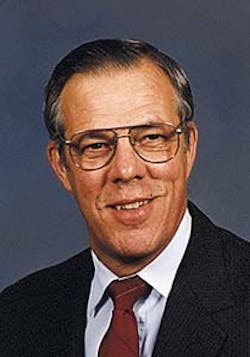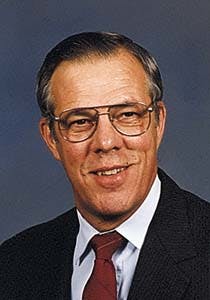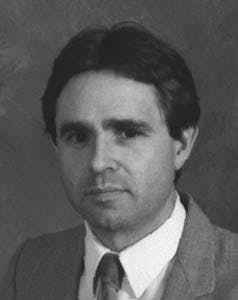Enchilada platform anchors offshore Louisiana transportation network
Dale M. Gallaher
Shell Offshore Inc.
New OrleansMichael J. Mahoney
Alliance Engineering Inc.
Houston
ABOUT THIS REPORT...
Installation in the Gulf of Mexico earlier this year of the Enchilada platform set in place the key link in a planned transportation chain from existing and future deepwater developments and shallower transportation systems to shore in South Louisiana. This special report reveals how the platform was designed and built to meet this hub function. A second article shows how significant odor problems at a Canadian crude and condensate shipping terminal were solved. Finally, a new method is presented for determining stresses and pipe ovality that may result from pressures and the composite steel-concrete wall. The method also determines allowable external pressure for concrete-coated pipe to withstand collapse.Design of the Enchilada platform recognized the platform's potential to serve as an oil and gas processing and transportation hub linking Gulf of Mexico deepwater developments in the Garden Banks area and the existing infrastructure on the shelf.
The platform was installed in January 1997 on Garden Banks Block 128 near the boundary of the Outer Continental Shelf margin.
Optimum design and planning of a new pipeline infrastructure have led to a variety of options for deepwater shippers to access existing downstream infrastructure.
Further, equipment, utilities, and space have been planned to allow additions to the Enchilada facilities to meet future needs of both Enchilada/Salsa area and outside producers.
Siting
The Enchilada platform (Platform A) is a joint venture of Shell Offshore Inc., Amerada Hess Corp., and Pennzoil Exploration & Production Co. Shell Gas Pipeline Co., Shell Pipe Line Corp., and Garden Banks Gas Pipeline LLC also own portions of the platform.Located about 170 miles southwest of New Orleans (Fig. 1), the platform was conceived as part of the development of gas and oil reserves in the Enchilada/Salsa area (ESA) which includes GB-83, GB-84, GB-127, GB-128, and GB-172.
Its location near the boundary of the shelf margin, however, was recognized during the design phase, and support for a processing and transportation hub were added to the design. Fig. 2 shows the location of the platform and the connected pipelines.
The second ESA platform, GB 172 B, will be installed later this year and will accommodate up to 15 wells. Production from GB 172 B will be transported to GB 128 A for processing and sales.
The 630-ft water depth GB 128 jacket employs a four-leg design installed in two sections by derrick-barge lift. This lightweight design achieved considerable cost and schedule savings compared to a launched jacket but limited the available payload to approximately 9,000 tons for deck, facility, and drilling loads.
The four-level deck has overall dimensions of 95 ft by 240 ft and supports additional facilities modules and the drill rig on the main deck. The deck was installed in January 1997. The lift weight of 4,500 tons made it one of the heaviest lifts set in the Gulf of Mexico. Fig. 3 shows Enchilada with Helmerich & Payne No. 203 rig installed.
Some of the capabilities included in the design of the Enchilada platform and facilities appear in an accompanying box.
Gas-transportation system
The 50-mile, 30-in. Garden Banks gas pipeline is owned by a limited liability company, Garden Banks Gas Pipeline LLC (GBGP) formed by subsidiaries of Shell Gas Pipeline Co. and Amerada Hess Corp. and is operated to serve the region as a pipeline jurisdictional to the U.S. Federal Energy Regulatory Commission (FERC).The system starts at GB 128 A and ends at South Marsh Island 76 where it has connections to systems operated by Transcontinental Gas Pipe Line Corp. and Bluewater Pipeline, a joint venture of Tennessee Gas Transmission and Columbia Gulf Transmission. Future connections are planned to the Sea Robin and ANR systems.
The four systems have combined capacities well in excess of the 1 bcfd certificated capacity of the Garden Banks gas pipeline and provide shippers on the pipeline a range of transportation, processing, and sales options. Currently, about 400 MMcfd of firm transportation are subscribed.
The two intermediate sales-gas takeoff points along the pipeline will each include a separator and a liquid-return line to return any retrograde condensate to the 30-in. line. All condensate is then separated and measured at South Marsh Island (SMI) 76 before injection into the Transco or Bluewater pipeline.
The location of GB 128 A, as stated, is favorable as a link between existing shelf infrastructure and deepwater development occurring in the Garden Banks area.
The first user of this link is Shell's tension leg platform Auger, on GB 426, in 2,860 ft of water and connected to GB 128 A by a 16-in. oil line and a 12-in. gas line.
These pipeline links provide additional sales-line capacity for the Auger platform, allowing it to increase production to more than 100,000 bo/d and 300 MMcfd from 75,000 bo/d and 160 MMcfd, previously.
The gas pipeline from Auger is supported by a 170-MMcfd booster compressor station on the Enchilada platform, consisting of an inlet slug catcher and a turbine-driven centrifugal compressor.
The deepwater seafloor temperature of 40° F. and pressure drop in the 40-mile gas line results in the formation of about 10 bbl/MMcf of retrograde condensate. Facilities on the platform can stabilize the condensate by multistage separation, heating, and blending.
The slug catcher removes this condensate at the compressor suction. It uses proprietary algorithms developed by Shell to sense slug arrival and automatically deploy control valving to throttle the slugging liquid and restore stable gas flow after the slug has passed.
This control scheme, employed previously on another Shell Offshore gas pipeline, enables the use of compact (6 ft diameter by 20 ft long, in this case) slug-catcher vessels capable of handling even severe slugs of several riser volumes.
Future deepwater gas producers connecting to Garden Banks gas pipeline at Enchilada will likely have similar needs. Provisions have been made in the facilities' design, therefore, to accommodate additional compression and two additional slug-catcher systems with individual capacity of up to 300 MMcfd.
Future compression additions may also benefit shippers desiring gas compression at the Enchilada hub.
Oil transportation
The Enchilada pipeline hub provides oil producers with a wide range of options utilizing two sales oil export pipelines.The 20-in. line is a common carrier line owned by Shell Pipeline Corp. and runs from GB 128 A to Eugene Island 331 A. It has a capacity of more than 200,000 b/d, and interconnections to other carriers in the Eugene Island and Bonito systems are available at EI 331 A.
A 4,500-hp, 200,000-b/d pipeline booster station is provided on Enchilada to serve incoming sales-oil pipelines including the 16-in. line from Auger. Tie-ins for future producers connecting to the Enchilada hub are available either upstream or downstream of the pump station.
The system capacity will increase with additional downstream debottlenecking planned by Shell Pipe Line Co.
The 12-in. line is a private line owned by Shell Oil Products Co. Shown in Fig. 2 as a low-sulfur oil pipeline, it is intended to allow Enchilada and other producers separately to sell production with less than 0.5% sulfur to obtain market premiums for such oil. This pipeline can deliver approximately 60,000 bo/d to Shell's central-gulf gathering system.
Oil and condensate processed on Enchilada are separately fed into the pipelines using additional pipeline pumps from each production train.
Production
The GB 128 A facilities are designed to process ESA production, to provide production handling for outside production, and to support the transportation hub.The facilities include the normal functions required to process and deliver oil and gas into a sales pipeline and to treat and dispose of produced water. Fig. 4 shows the oil facilities, including the segregated crude oil (high sulfur) and condensate (low sulfur) oil production and processing trains.
The crude-oil train has a capacity of 40,000 bo/d. This train includes a high-pressure separator, a free-water knock out, heat exchangers, an electrostatic oil treater, produced-water treating, an oil-storage tank, a lease-automatic-custody-transfer (LACT) unit, and pumps to deliver the oil into the high-sulfur-oil sales line.
Provision was made to add another parallel oil train in the future. With the second crude-oil train, the crude oil capacity could be increased to over 100,000 bo/d.
The 20,000 bo/d condensate train includes a high-pressure separator, an intermediate-pressure flash separator, a condensate heater, a low-pressure separator/coalescer, a storage tank, a LACT unit, and pumps to deliver condensate into the low-sulfur pipeline.
The volatile condensate which is recovered in the gas-line slug catcher is blended in the condensate flash separator with heavier liquids from the ESA blocks. The fluid entering the low-pressure separator-coalescer is heated to improve condensate-water separation and to achieve acceptable volatility for sales.
The 400-MMcfd gas facility uses a standard triethelyene glycol (TEG) gas-dehydration system to dry the gas to pipeline quality.
Compression for both trains is provided by a 2,250-hp, electric-driven, flash gas compressor and a 600-hp vapor-recovery unit. Space and electric power are provided for a future compressor module. This module would accommodate two additional compressors which could be either turbine or electric-motor driven.
Electric power and process heat are provided by three Solar Taurus 60 turbine generator sets and two diesel generators with a combined nameplate capacity of 15,000 kw. With the exception of the Auger gas booster compressor, all platform loads, including the drilling rig, are powered by these generators.
The selection of electric power for most loads was driven by the need to reduce weight and save space. It also lends itself well to installation of a large-capacity, waste-heat recovery system for process heat needs.
Two of the three generator turbine drivers are equipped with waste-heat recovery units (WHRUs), and space is available to add a third.
The WHRUs include burners for supplemental firing to provide the full capacity of 35 MMBTU/hr/unit largely independent of the generator load. The system can provide sufficient heat to process more than 100,000 bo/d of production arriving at seabed temperature.
Acknowledgment
The authors wish to acknowledge the contributions to this article of David J. Agerton, Shell Gas Pipeline Co., and Gerry L. Moynier, Shell Pipe Line Corp., who are the sponsors of the gas and oil pipeline projects.Enchilda platform facilities
- Provision for 18 pipelines sized from 10 to 30 in. (7 initial, 11 future)
- Two oil sales (20-in. high sulfur, 12-in. low sulfur) pipelines
- Two oil trains with a combined capacity of 60,000 bo/d with provision for expansion
- Gas separation and dehydration capacity of 400 MMcfd
- Three slug catchers (one initial, two future) to remove liquids from incoming gas pipelines
- A 4,500-hp oil pipeline booster station
- A 170-MMcfd, turbine-driven gas pipeline booster compressor
- Fifteen well slots
- Full facilities with a drilling rig on the platform
- A generator station with three 4,750-kw turbine generators and waste-heat recovery for process heat
The Authors
Dale M. Gallaher is a senior staff facilities engineer at Shell Offshore Inc. in New Orleans. He holds a BS in physics and an MS in electrical engineering from Oregon State University and an MS in computer engineering from Tulane University. He is a registered professional engineer in Washington.
Michael J. Mahoney is manager of projects at Alliance Engineering Inc. in Houston, where he has been project manager for engineering and design of the Enchilada platform. He has more than 20 years' experience and previously was a consulting engineering at Paragon Engineering Services Inc., Houston. Mahoney holds a BS in mechanical engineering from Stanford University, is a member of SPE, and is a registered professional engineer in California.
Copyright 1997 Oil & Gas Journal. All Rights Reserved.


